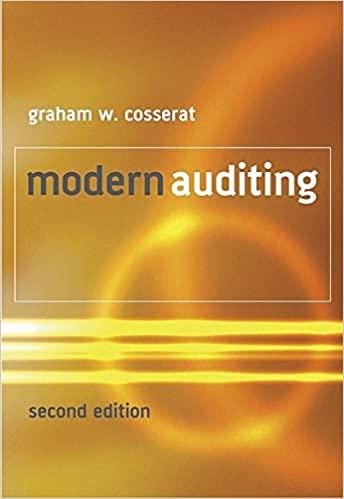Answered step by step
Verified Expert Solution
Question
1 Approved Answer
My Bean Inc. operates a chain of doughnut shops. The company is considering two possible expansion plans. Plan A would open eight smaller shops at










 My Bean Inc. operates a chain of doughnut shops. The company is considering two possible expansion plans. Plan A would open eight smaller shops at a cost of $8,540,000. Expected annual net cash inflows are $1,600,000 with zero residual value at the end of ten years. Under Plan B, My Bean would open three larger shops at a cost of $8,440,000. This plan is expected to generate net cash inflows of $1,250,000 per year for ten years, the estimated life of the properties. Estimated residual value is $1,150,000. My Bean uses straight-line depreciation and requires an annual return of 6%. (Click the icon to view the present value annuity factor table.) (Click the icon to view the present value factor table.) (Click the icon to view the future value annuity factor table.) 'Click the icon to view the future value factor table.) Read the requirements. Requirement 2. Which expansion plan should Mugs choose? Why? Recommendation: Invest in . It has the net present value. It also has a payback period. Requirement 3. Estimate Plan A's IRR. How does the IRR compare with the company's required rate of return? The IRR (internal rate of return) of Plan A is between Match the term with the strengths and weaknesses listed for each of the three capital budgeting models. Net present value of Plan B Next compute the NPV (net present value) under each plan. Begin with Plan A, then compute Plan B. (Round your answers to the nearest whole dollar and use parentheses or a minus sign to represent a negative NPV.) Net present value of Plan A Now compute the ARR (accounting rate of return) for both plans. (Round the percentages to the nearest tenth percent.) PlanAPlanB%% Requirement 1. Compute the payback period, the ARR, and the NPV of these two plans. What are the strengths and weaknesses of these capital budgeting models? Begin by computing the payback period for both plans. (Round your answers to one decimal place.) Plan A (in years) Plan B (in years)
My Bean Inc. operates a chain of doughnut shops. The company is considering two possible expansion plans. Plan A would open eight smaller shops at a cost of $8,540,000. Expected annual net cash inflows are $1,600,000 with zero residual value at the end of ten years. Under Plan B, My Bean would open three larger shops at a cost of $8,440,000. This plan is expected to generate net cash inflows of $1,250,000 per year for ten years, the estimated life of the properties. Estimated residual value is $1,150,000. My Bean uses straight-line depreciation and requires an annual return of 6%. (Click the icon to view the present value annuity factor table.) (Click the icon to view the present value factor table.) (Click the icon to view the future value annuity factor table.) 'Click the icon to view the future value factor table.) Read the requirements. Requirement 2. Which expansion plan should Mugs choose? Why? Recommendation: Invest in . It has the net present value. It also has a payback period. Requirement 3. Estimate Plan A's IRR. How does the IRR compare with the company's required rate of return? The IRR (internal rate of return) of Plan A is between Match the term with the strengths and weaknesses listed for each of the three capital budgeting models. Net present value of Plan B Next compute the NPV (net present value) under each plan. Begin with Plan A, then compute Plan B. (Round your answers to the nearest whole dollar and use parentheses or a minus sign to represent a negative NPV.) Net present value of Plan A Now compute the ARR (accounting rate of return) for both plans. (Round the percentages to the nearest tenth percent.) PlanAPlanB%% Requirement 1. Compute the payback period, the ARR, and the NPV of these two plans. What are the strengths and weaknesses of these capital budgeting models? Begin by computing the payback period for both plans. (Round your answers to one decimal place.) Plan A (in years) Plan B (in years) Step by Step Solution
There are 3 Steps involved in it
Step: 1

Get Instant Access to Expert-Tailored Solutions
See step-by-step solutions with expert insights and AI powered tools for academic success
Step: 2

Step: 3

Ace Your Homework with AI
Get the answers you need in no time with our AI-driven, step-by-step assistance
Get Started


